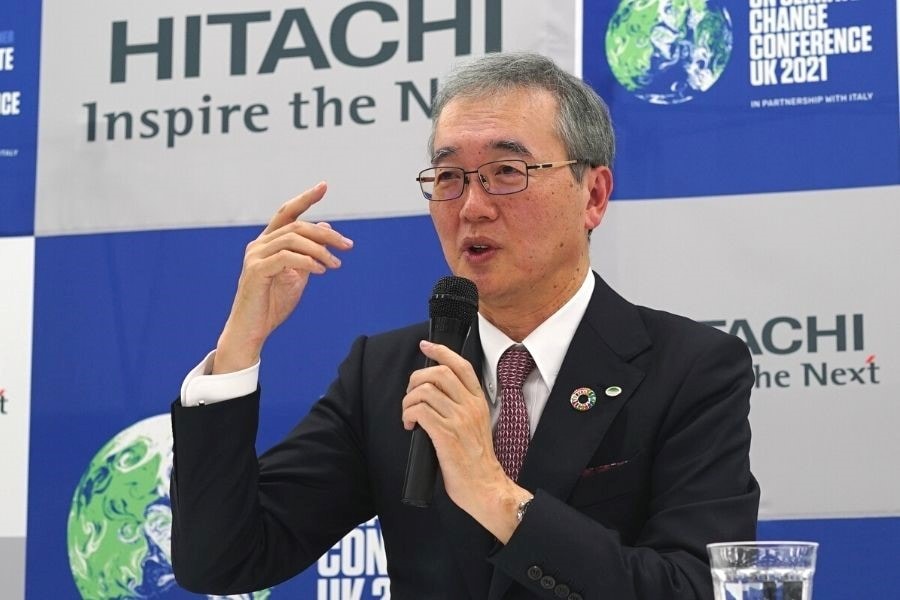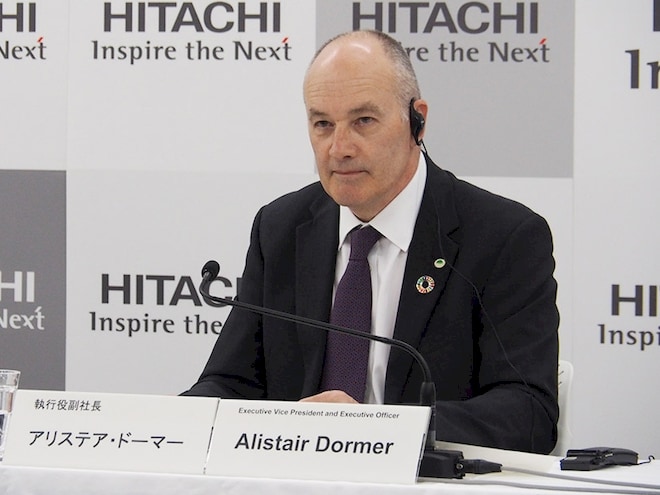The Internal Carbon Pricing System and its Benefits
Mar. 17, 2022
Akihiko Nakasaku

- Table of Contents
-
- What is ICP?
- Changes to equipment investment, thanks to the introduction of ICP
- Reason for Hitachi to introduce ICP
- Investment in energy conservation increased by more than 5% after the introduction of ICP
- Introduction of an automated control system due to ICP
- Social benefits from investments that leverage ICP
To realize a decarbonized society, an increasing number of companies are introducing internal carbon pricing (ICP), which is a new administrative accounting system. Hitachi, Ltd. introduced ICP in 2019 and is starting to see changes in equipment investment. What is the ICP system and what benefits does it offer to companies and society? This article will answer these questions while introducing specific examples.
What is ICP?
ICP is a system in which companies voluntarily put a monetary value on the amount of CO2 they emit as part of their business activities.
When new equipment is introduced, the reduction in CO2 emissions from the equipment is converted into a price, and a unique in-house price is set. The aim of incorporating this system into investment decisions is to reduce CO2 emissions. Furthermore, introducing ICP beforehand will help prepare companies for the expected increase in the carbon tax in the future.
Companies that have introduced ICP are increasing. According to the CDP, which is an international non-profit organization that assesses the environment, there were over 2,000 companies worldwide in 2020 that have or were planning to introduce ICP, and there are about 250 such companies in Japan.
In the background of this was the 21st Session of the Conference of the Parties (COP21) to the United Nations Framework Convention on Climate Change (UNFCCC) and its adopting of the Paris Agreement, which aims to strengthen the global response to the threat of climate change by: “Holding the increase in the global average temperature to well below 2°C above pre-industrial levels and to pursue efforts to limit the temperature increase to 1.5°C above pre-industrial levels.” Hence, companies are also required to take action to fulfil this goal.
Changes to equipment investment, thanks to the introduction of ICP
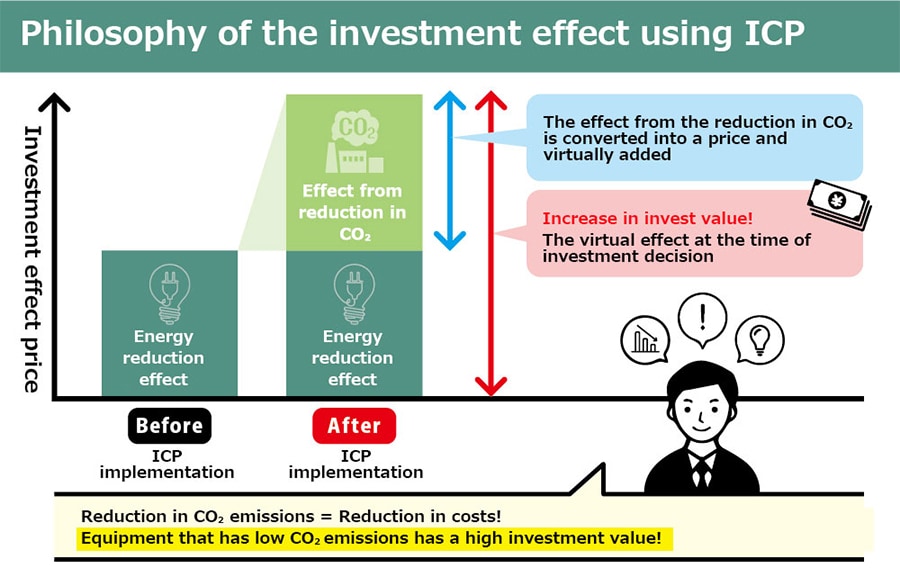
Hitachi's ICP treats the reduction in CO2 emissions as an "investment effect" and sets a price of 14,000 yen (approximately 118 dollars) per ton of CO2 emissions reduced via newly installed equipment. Therefore, equipment that emits a smaller amount of CO2 becomes the target for investment.
The ICP format and pricing varies by company, and the price of 14,000 yen (approximately 118 dollars) per ton set by Hitachi is seen as one of the highest in the world.
Prior to the introduction of ICP, Hitachi did not consider a reduction in CO2 as investment effect. Even if the effect from reducing carbon emissions was significant, it was not recognized as a positive.
However, since the introduction of ICP, the amount that carbon emissions are reduced has been added to the investment effect, and the introduction of equipment with low CO2 emissions is now promoted.
Reason for Hitachi to introduce ICP
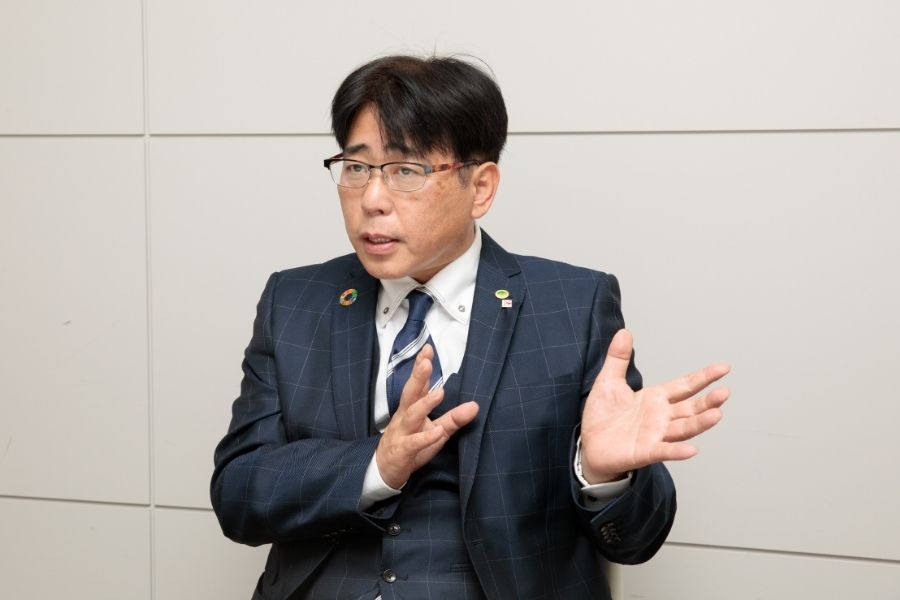
Hitachi introduced ICP in 2019 due to the long-term environmental goals that the company set in 2016. Tsutomu Kubo of the Hitachi Sustainability Promotion Division, who pushed for the introduction of ICP, said the following:
“At the time, Hitachi set the goal of reducing CO2 emissions by 50% by FY2030 at our factories and offices. We didn’t think we could meet the goal through conventional equipment investment.”
Thus, ICP was implemented to achieve this goal. At the time, they set the price of CO2 at 5,000 yen (approximately 42 dollars) per ton, but in August 2021, the price was raised to 14,000 yen (approximately 118 dollars) per ton because the importance of having equipment that produced low carbon emissions further increased.
Investment in energy conservation increased by more than 5% after the introduction of ICP
It has been three years since Hitachi introduced ICP, and it is proactively evaluating ICP at each business site with ongoing investments in decarbonization. Specifically, there has been an increase in the introduction of high-efficiency equipment and machines that reduce burden on the environment, such as in the change to the use of high-efficiency air compressors and air conditioners.
Kubo said: “It has only been three years since we introduced ICP, and it is difficult to judge its effectiveness due to the impact of COVID-19, but we believe that the increase in investment in energy conservation by more than 5% is a major achievement.”
Furthermore, in terms of the reduction in CO2 through investment that leverages ICP, Kubo has assessed this, saying: "It was about 1,800 tons in FY2019 and FY2020.”
“Although it took some time for ICP to be embraced by the entire Hitachi Group, it is now widely accepted as a way to achieve carbon neutrality.”
Introduction of an automated control system due to ICP
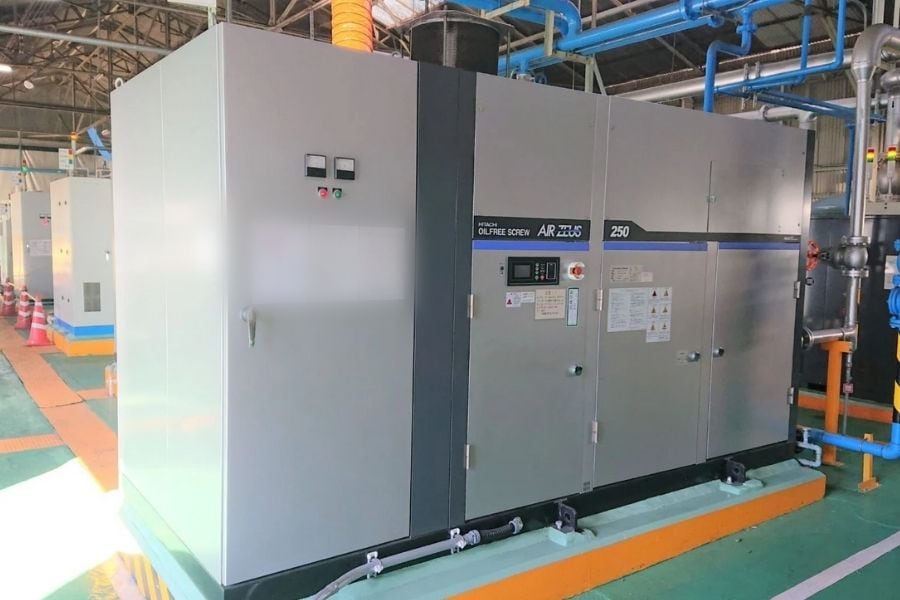
Taga Works (Hitachi City, Ibaraki Prefecture) of Hitachi Global Life Solutions (Hitachi GLS), a manufacturer of refrigerators, washing machines, and other home appliances, introduced an automated control system for air compressors leveraging ICP. Air compressors are indispensable equipment as a power source for production lines.
Up until now, the operation of air compressors was controlled manually by humans, but now, thanks to the introduction of an automated control system, there is no operational waste enabling a significant reduction in power consumption.
If the reduction in power consumption is converted into a reduction in CO2, it is said to be a reduction of about 10%. The introduction of this automated control system was also made possible because the effect of CO2 reduction is now being evaluated by ICP.
Shinji Seya from Hitachi GLS said: “Up until now, investment mainly in energy conservation was difficult, but with the introduction of ICP, the amount of CO2 reduction can be added to the investment effect, and we feel that the possibility of being selected even when competing with other projects is increasing.”
Social benefits from investments that leverage ICP
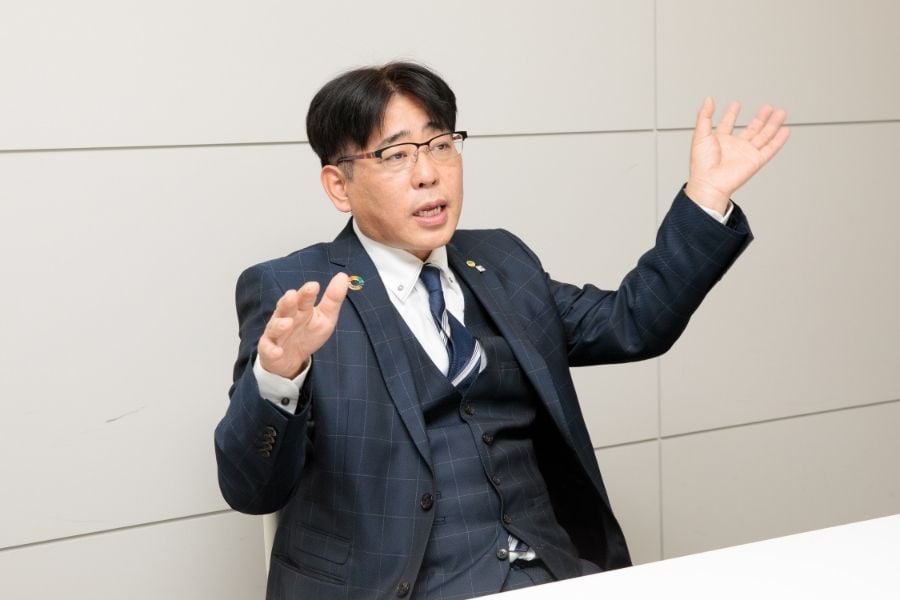
In order to stop global warming, the world is moving full-scale toward decarbonization, and companies are also required to take further action. Hence, ICP is garnering attention as a way of reducing CO2 emissions.
At Hitachi, expectations are also increasingly rising for the use of ICP as internal awareness rises for the realization of carbon neutrality.
Kubo finished this interview by saying: “I hope that people will use ICP to aggressively try making investments that had been considered inefficient in the past. Hitachi believes that by returning the results to our customers, we will be able to contribute to society more than ever before.”

